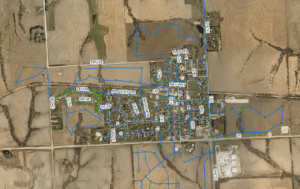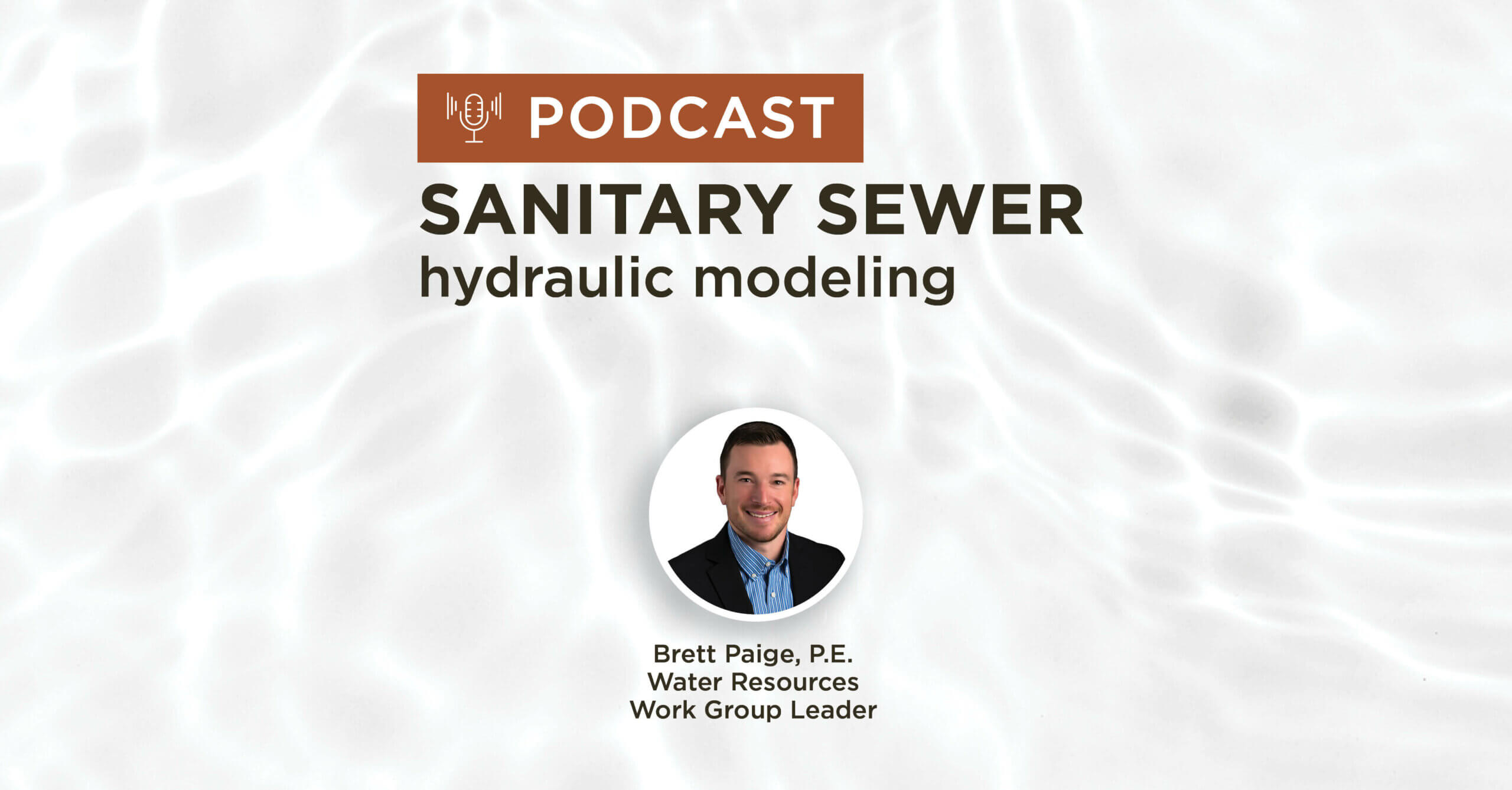Hydraulic Modeling Provides Insight into the Impacts of Flows on Infrastructure
Hydraulic modeling is a commonly used tool in the field of water resources engineering for the analysis and evaluation of water and wastewater utilities. While building models to simulate a real-world situation isn’t a new concept, it’s becoming increasingly essential for decision-making by removing the risk component.
As hydraulic modeling continues to evolve as an essential tool of infrastructure management, breaking down the massive amounts of data available to create an accurate model is becoming a challenge. Listen in as Brett Paige, P.E. examines the background of standard modeling practices and shares current trends in functionality, application, and data integration.
Podcast Agenda
- Hydraulic Modeling & How It Aids Collection System Evaluations (0:18)
- Typical Hydraulic Modeling Objectives (1:45)
- Model Development and Calibration (2:14)
- Defining the Mannings Coefficients (3:29)
- Capacity Evaluation & Prioritization (4:09)

Brett Paige, P.E.
Water Resources Work Group LeaderBrett Paige, P.E.
Water Resources Work Group LeaderSystem analysis, design, utility coordination, construction document preparation, cost estimating, permitting
Hydraulic Modeling & How It Aids Collection System Evaluations
(0:18)
Hydraulic modeling is a computer-aided simulation based on user input criteria. We’re pushing flow into the system and seeing how it will respond. One of the benefits of having a hydraulic model, we can simulate flow patterns at a click of a button, and it allows us to evaluate a large amount of data in a small amount of time. One key approach when we’re doing hydraulic models is to always question everything. There’s always something that can probably be corrected or manipulated in the model to make it better. I think models are foundationally built on making assumptions and being able to reduce as many assumptions as you can is only going to improve the accuracy and output of the results that you’re getting.
Collection systems are complex. If you’re in a larger community, you have gates, you have bypasses, you have a large sewer shed area with a large amount of flow and miles and miles of sewer pipe. If we had to do that all by hand, it would be almost unachievable. We’re able to build a network and simulate hydraulic calculations on a massive scale at the click of a button and have a computer-aided process with that for our basis. They allow us to understand the system, we can quickly identify problems, and if we’re getting into some of our design alternatives, we can make some small changes and just see what happens not only to the improvement that we’re evaluating but maybe there are some downstream impacts as well that we need to evaluate.
Typical Hydraulic Modeling Objectives

Hydraulic models show the effects of changing demand and climate conditions on water distribution and wastewater collection systems.
(1:45)
Typical modeling objectives, we’re trying to evaluate capacity, looking at location frequency and volumes of overflows to understand where some of the worst areas might be, identify system improvements, bouncing back and forth between alternative feasibility, trying to optimize anything that we have recommended for improvement through other assessment methods and prioritize based on backups to hopefully understand where the restriction is relating to those common locations as well and then reduce flooding. All the above.
Model Development and Calibration
(2:14)
GIS networks within communities are more common now, and having a base GIS network is really a good starting point and gets us a little bit ahead in the process, depending on the quality of that information. But most models are being built from GIS data as it’s available, and then we’re truthing that with any as-built or plan data, sending our survey crews out for any data gaps that we need to fill, whether that inverts information or RIMS, things of that nature.
Facility information, looking at pump curves, operation settings. If we have any SCADA data where our gates are opened to closed at certain flows, any weirs, things of that nature. Sewer shed hydrology, time of concentration, how quick is that flow getting downstream to the point in the model. That’s established from some of the flow analysis processes that we previously discussed and then estimating flow values from the output.
Once we have a model built, we’re going to need to calibrate it to make sure the results that we get are representative of the system that we have modeled. We’re going to take flow meter data and try to do that and replicate real flows in the model to try to achieve the same peaks and base dry weather flow for the rainfall events that we’ve seen. As we’re going through the calibration process, we’re getting different flows. We’re tweaking things that are going to make the model system output flow more similar to what was recorded.
Defining the Mannings Coefficients
(3:29)
Some of the things that we’re going to adjust are going to be the Manning’s Coefficients, which will be the smoothness of pipes that we have throughout the network, flow factors, any peaking factors that we may be employing connectivity, sometimes we figure out through the modeling process that certain pipes don’t connect and they’re sending flow in a different direction so correcting that and then various time to peaks, or time of concentrations that we’re seeing.
A lot of this is based on engineering judgment. I think just over time, with experience doing these types of projects, you just get a feel for what’s acceptable, what’s within range, and using some of those tools to understand what’s happening upstream and what should be expected and making those corrections as you go.
Capacity Evaluation & Prioritization
(4:09)
So taking the model, doing a capacity evaluation, whether that’s just for a singular pipe or a small part of the system, or doing a system-wide capacity evaluation. We’re looking at hydraulic grade lines to identify certain restriction points, and then as we look at prioritization, working downstream to upstream. If we start upsizing upstream before downstream, we’re going to be sending more flow already restricted systems. So just make that point to prioritize as you work your way up.
